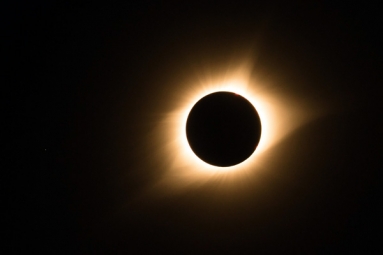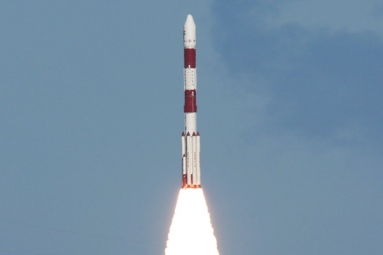
India has tested its Agni-V, intercontinental ballistic missile (ICBM) in its final operational configuration from Wheeler Island off Odisha on December 26. This paves the way for its eventual induction into the Strategic Forces Command (SFC) after user-trials.
The nuclear-capable Agni-V, can reach the northernmost parts of China with its strike range of over 5,000-km. It had been test-fired from its canister on a launcher truck shortly after 11 am. According to the officials, "The test parameters of the missile, which had been tested for its full range, are being evaluated. It will take some time to say whether it was full success or not”.
The fourth and final experimental test of the three-stage Agni-V, has come after a gap of two years due to minor technical tweaking required in the ballistic missile as well as the need for India to exercise some strategic restraint when,it had been seeking entry into the 48-country Nuclear Suppliers Group (which was thwarted by China) and the 34-nation Missile Technology Control Regime (which India joined earlier this year).
Yards long Spider on Mars, NASA
The tri-Service SFC, which was established in 2003 to manage India's nuclear arsenal, must conduct at least two user-trials before the 50-tonne missile is produced in adequate numbers for induction.
While the 17-metre tall Agni-V had been tested in an "open configuration" in April 2012 and September 2013, the third test in January 2015 saw it being fired from a hermetically sealed canister mounted on a Tatra launcher truck. The missile's canister-launch version has made it even deadlier since it gave the armed forces requisite flexibility to transport swiftly and fire the missile from anywhere they want.
Once the Agni-V will be inducted, India will join the super exclusive club of countries with ICBMs (missiles with a range of over 5,000-5,500km) alongside the US, Russia, China, France and the UK.
Apart from the shorter-range Prithvi and Dhanush missiles, the SFC has inducted the Agni-I, Agni-II and Agni-III missiles. While these missiles were mainly geared towards Pakistan, the Agni-IV and Agni-V are specifically made for deterrence against China. Beijing, of course, has been leagues ahead in terms of its missile and nuclear arsenals.
By Prakriti neogi











